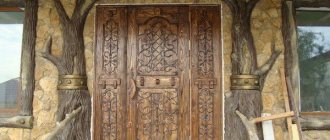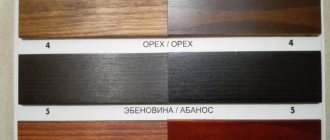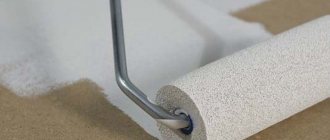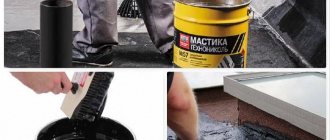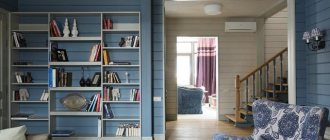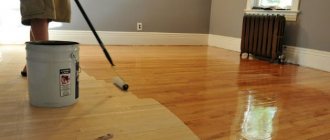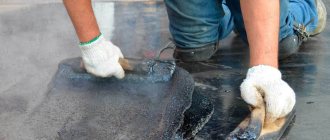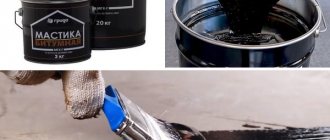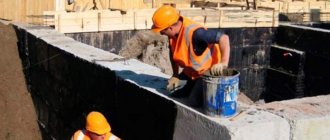Wood can rightfully be called one of the best building materials. Ease of use and versatility allow us to use wood for almost everything. Well, such shortcomings as susceptibility to fire, moisture, mold and pests, as well as other things, can be corrected with the help of processing agents. And one of these means is mastic based on bitumen or wax. In this article we will focus on its description, application methods and even methods for making it yourself.
Why do you need mastic?
When used correctly, these compounds help protect wood from swelling and deformation and create a reliable protective layer that:
- preserves natural color and makes it brighter;
- emphasizes the natural pattern of the fibers;
- reliably protects the wooden surface from dust and moisture.
Mastic saturates the wood with protective substances, making it resistant to moisture and giving it antiseptic properties. Wooden log houses treated with a special mastic can withstand wintering well, without fear of frost or snowfall. These compounds protect fibers, and regular treatment helps increase the service life of buildings for many years.
What is it used for?
Such mixtures, when used correctly, perfectly protect the tree from swelling and changing shape, they provide a good layer of protection, it:
- Makes the natural tone of wood more saturated.
- Highlights surface structure.
- Perfectly protects the surface from dirt and water.
The mixture impregnates the wood and gives it protection, so the surface becomes more resistant to moisture, while the material also acts as an antiseptic.
Log houses made of wood, which are coated with a special composition, withstand the winter period well and do not react to sub-zero temperatures and snowstorms.
Such materials preserve fibers; periodic overlapping of wood increases the service life of buildings.
Composition and main characteristics
Wood mastic is prepared from a variety of components and comes in different varieties. But in general, mastics have one common property: excellent waterproofing. If they contain natural components, then the protective layer can stretch, exceeding the original area by more than 20 times, but without spreading or deforming.
Some compounds do not harden completely even many months after application. They have excellent adhesion: they fit well on a wooden surface and do not come off for a long time.
Mastic allows you to create a water-repellent layer, provides resistance to dust, ultraviolet radiation and various contaminants. The main advantage over conventional varnish is that it penetrates deep into the fibers and extends their service life, rather than remaining on the surface, like conventional compounds.
Treatment with mastic protects the log house from moisture, rotting and ultraviolet exposure
Rules for working with substances on wood
Work must be carried out with protected hands and gloves.
The composition has a high viscosity, so even when hot it does not blur, but during the application procedure you must definitely use protective equipment for the face and eyes.
The wooden base is cleaned of various contaminants and allowed to dry. If there is an old coating, it is completely removed, since the new coating may not saturate the material.
Advantages and disadvantages
If you want to combine all the advantages of wood mastic and display them in a general list, it will look like this:
- Environmentally friendly. Here you need to take into account the composition of the substance.
- Durability. With regular care, wooden products can last for tens or even hundreds of years.
- Elasticity. It stretches well.
- Easy to apply. Mastic can be used by a person who does not have much experience in repair or construction.
- Protection against heavy loads. Wooden floors crack less and retain their structure.
- Improved aesthetics. Mastic gives the wood a pleasant shine, makes its color more rich and noble.
The disadvantage is that it is necessary to renew the coating 1-2 times a year. In addition, some formulations contain caustic chemicals, including gasoline and solvents, which evaporate and rise into the air when dry. This directly applies to cold-curing mastic. If you use one of these, you need to wear a protective mask, wait a few days and ventilate the room well before moving in.
Application
- Roofing. Used for repairing roofing, for installing tiles (soft), for binding with rolled materials.
- For waterproofing foundation treatment. The covering is done both on a strip foundation and on a pile foundation.
- Bituminous material is used as waterproofing under screed. Perfect for bathroom, basement, garage floors.
- When constructing swimming pools and terraces. In these cases, rubber mastic is used for work.
Cold application bitumen mastic material consumption:
- For gluing 0.8 – 1 kg per square meter
- For a waterproofing layer 2 – 3.8 kg per square meter
There are two leading manufacturers on the market:
- Bitumen mastic TECHNONICOL
- Bitumen mastic EXPERT
Both manufacturers meet all requirements. There may be differences in prices. And some nuances, such as material consumption and drying time.
Important to remember. Before using mastic, it is necessary to clean the surface of debris and dirt. The area to be treated must be dry. If the surface is porous, it must be pre-treated with a primer.
Wood is the most popular and irreplaceable material in construction, distinguished by its excellent technical properties. But, like a number of other coatings, it has some disadvantages. One of the most important is instability to moisture, which results in a tendency to rot and mold. Waterproofing made in a special way allows you to keep the tree in perfect condition from such negative influences and extend its service life several times. It will not only make the material resistant to excess moisture and steam, but will also improve its technical characteristics several times. How is waterproofing done for wood? What materials are most appropriate to use for this purpose? What requirements must waterproofing meet? Let's try to find answers to the questions posed.
Classification of mastic
It is worth taking a closer look at what kind of mastic can be found on sale and for what purposes it is intended. This useful information will help you make your choice.
Separation by technological features
Based on this factor, wood mastic is divided into 2 types:
- cold;
- hot.
The first contains gasoline, solvents and white spirit. If these fumes dry out, they can be harmful to health. The second is made from bitumen and rubber, and therefore is considered more environmentally friendly. It dries much faster.
Separation by composition
The product can be made not only from those components that were given above. For example, hard mastic for rubbing floors is made from beeswax, and it is effective and durable.
If you are treating floors that were previously laid with bitumen mastic (for waterproofing), then you cannot use products that contain turpentine. In such a case, it is better to consult a specialist.
There are also mastics:
- one-component - intended for one-time use, as they harden quickly;
- two-component - more suitable for reusable use, but first they must be mixed with a special thickener.
Application methods
Wood is protected with bitumen mastic using the painting method. That is, it is applied like regular paint using a brush or roller. It’s true that it will be difficult to wash the tools after work. This method is also suitable for small spaces. Bitumen mastic is viscous and quite difficult to work with. If you plan to waterproof a large area, it is worth considering a simpler and more economical method - spraying. Only it requires special equipment and skills to work with it. Such processing should be entrusted to professionals.
Features of hot solutions
They have deep penetrating ability and durability. This mastic can protect wood even from damp soil and constant humidity, and therefore is used for treating basement floors, pillars and floor joists.
To apply such a mastic, it is necessary to heat it to a temperature of about 180 degrees Celsius. The process of using hot compounds is associated with health risks, since severe burns can occur.
Using a gas burner to impregnate wood with mastic
What is bitumen varnish
Bituminous varnish is characterized by its brown color or the varnish can be completely colorless.
Let's consider the main types of bitumen material:
- Bitumen from natural materials - this type includes varnishes containing asphalt and asphaltites.
- Bitumen from artificial materials is an artificial residue from the process of refining petroleum products.
- Bitumen with admixtures of stones, coal or wood.
- Bitumen containing various oils.
- Bitumen without oil impurities - this bitumen contains natural diluting liquid and rosin.
- Carboniferous - bitumen with admixtures of stones and coal.
How to apply this material to the surface of wood
To apply mastic you can use:
- a brush with coarse bristles;
- an ordinary paint roller;
- spray gun.
Due to cost-effectiveness and availability, it is recommended to use a roller and brushes. They don't require much practice and are cheap, so you can always buy new tools at any hardware or hardware store.
Subtleties of waterproofing for wooden surfaces ↑
Waterproofing for wood is performed using a special technology, depending on the materials used for this purpose. It can be laid and fixed using hot or cold bitumen (if roll materials are used), poured in two to six layers (if cast and impregnated materials are used), applied using a special device (if painting material is used) . It is very important to adhere to temperature guidelines. Otherwise, all the work done will have to be redone.
It is recommended to entrust waterproofing for wood to specialists. They will select the most optimal option with utmost precision, perform the necessary work, adhering to strict regulations and requirements, thus ensuring reliable protection of the tree from moisture.
>
Making your own mastic
If you don’t want to use ready-made mastic for one reason or another, you can make it yourself. To do this you will need the following components:
- wax (carnauba or beeswax) - 4 parts by mass;
- rosin (pine or gum) - 1 wt. share;
- turpentine (gum) - 2 wt. shares.
Strictly follow the indicated proportions. First you need to grate the wax and mix it with crushed rosin. Then this mixture is melted in a water bath (you need to stir it systematically).
Next comes the most dangerous part. Turpentine is very flammable. It must be heated in a container with hot water and avoid exposure to open flames. Heated turpentine is added to the prepared mixture of wax and rosin and mixed thoroughly.
At the last stage, the resulting mass is poured into a container. It cools and thickens, after which it can be used for application to wooden surfaces. Using mastic, you don’t have to worry about the condition of the wood: the coatings will be protected from abrasions, dirt and the appearance of unwanted microorganisms.
Conclusion
Each composition has its own application instructions. Bitumen-based mastics, as a rule, are applied once; a wooden or parquet floor can be treated 1-3 times. The number of layers on decorative products can reach up to 7. Most often, there are no clear regulations; everything is determined visually.
This article will help you understand what cold-applied bitumen mastic is. What is the difference between cold and hot mastic. Where is it used? How to choose the right material based on properties and qualities for the required work.
Bitumen is a hard resin, and mastic is made from it. In order for the material to become plastic, its temperature is increased, which significantly increases the work time and has an obvious drawback - the risk of fire.
For this reason, it is much more convenient to use cold applied mastic. Thanks to the solvents present in the composition, the waterproofing material is in a liquid state and does not require heating for use.
Hot and cold mastics are used to achieve complete waterproofing. The solvent evaporates and the material hardens. The result is a high-strength waterproofing layer.
Adhesive sealant for seams, gray
CEMMIX Adhesive-sealant for seams is a one-component polyurethane sealant for sealing various seams, junctions of steps and walls, entry of pipes and ventilation systems and rigid-elastic gluing of various materials.
More details
As a result, a rubber-like waterproof membrane is formed in the seams, which is elastic and resistant to various adverse influences and reliably protects the house from dampness and cold. A pleasant bonus will be the appearance of the house - neat, stylish and interesting. The color of the sealant is usually selected to match the wood (impregnation), but it is also possible to choose a contrasting option.
Video: Instructions for installing sealant
Cemmix facade adhesive-sealant and Cemmix adhesive-sealant for seams are the optimal choice for sealing and sealing any seams, abutments and joints in a wooden house or bathhouse. By using them, you will get reliable and durable sealing of seams, a beautiful appearance of your home, and savings on heating costs. You can buy Cemmix facade adhesive-sealant and Cemmix adhesive-sealant for seams wholesale, retail and online.
You can buy CEMMIX products without leaving your home, with discounts from 5 to 33%!!!!
Buy on Ozon
Buy on Yandex.Market
Buy on Wildberries
Buy at Leroy Merlin
Or you can find the nearest official dealer in your region on our map
← Sealant for external use
Roof sealant →
Return to list
Comments
Where in a wooden house sealing may be required
So, in a wooden house, seals and seals require inter-crown joints, gaps around the perimeter of casings of windows and doors, junctions around heating and water pipes, chimneys, fastening baseboards, places where communications pass, and various seams.
In addition, there may be defects, cracks, or crevices in the structure and in the logs themselves that need to be repaired. In addition to defects, special cuts are also made on logs to compensate for deformations, and these cuts also need to be filled with some kind of elastic material.
In a bathhouse on a tiled or concrete floor, a waterproof sealant is required in the seams between the tiles, as well as in the places where the floor meets the walls and the drain, and the walls in the corners.
Cons of bitumen varnish
- This material tends to burn out.
- Harsh odors and harmful substances that are used in semi-synthetic or synthetic types.
- High fire hazard indicators.
- Repeated coats are required.
- Contents of components harmful to the human body.
- High fire hazard.
- Limited use for façade paint.
You can see that the advantages of this type of paint and varnish material outweigh its disadvantages, which makes it very popular and attractive to consumers.
Manufacturers of bitumen varnish
To correctly select high-quality bitumen varnish, you will need to study the list of proven, best manufacturers of bitumen varnish.
Among the most proven manufacturers are:
- Kotovsky paint and varnish plant.
- Perm paint and varnish plant.
- Ufa paint and varnish plant.
- Azov paint and varnish plant.
- Bobrovsky experimental plant.
